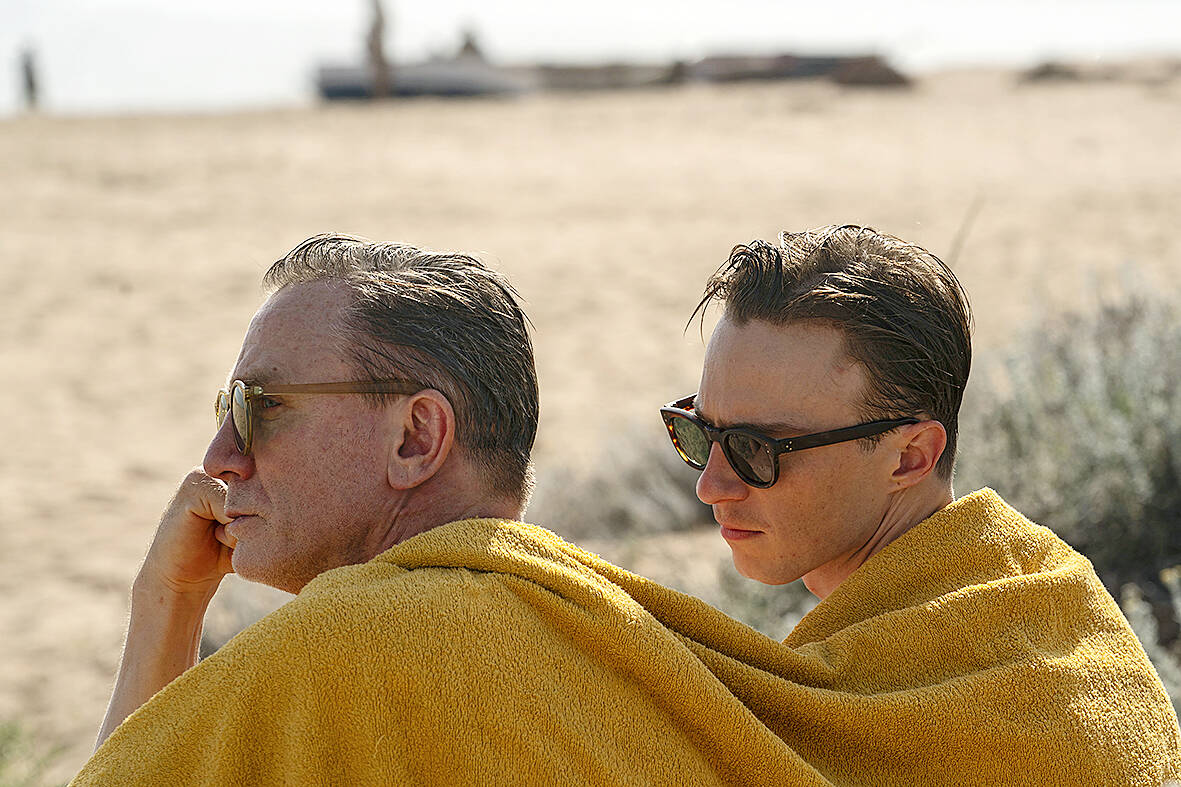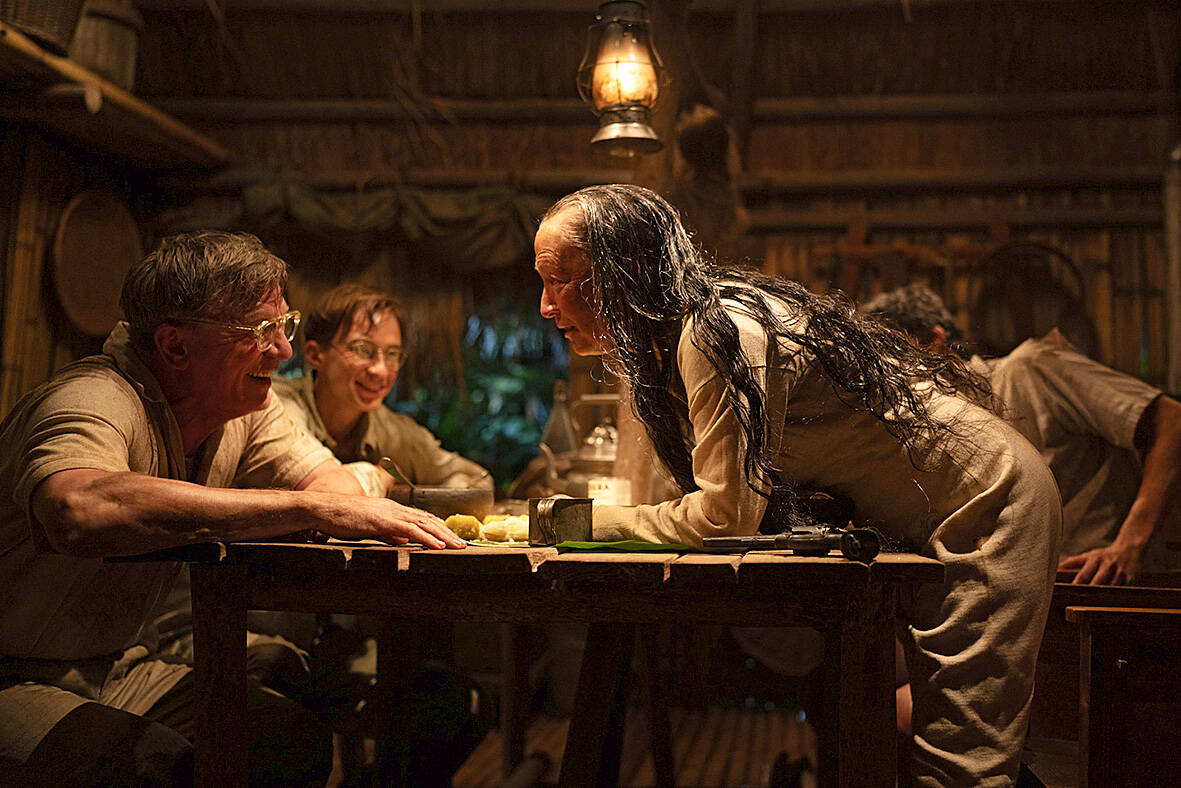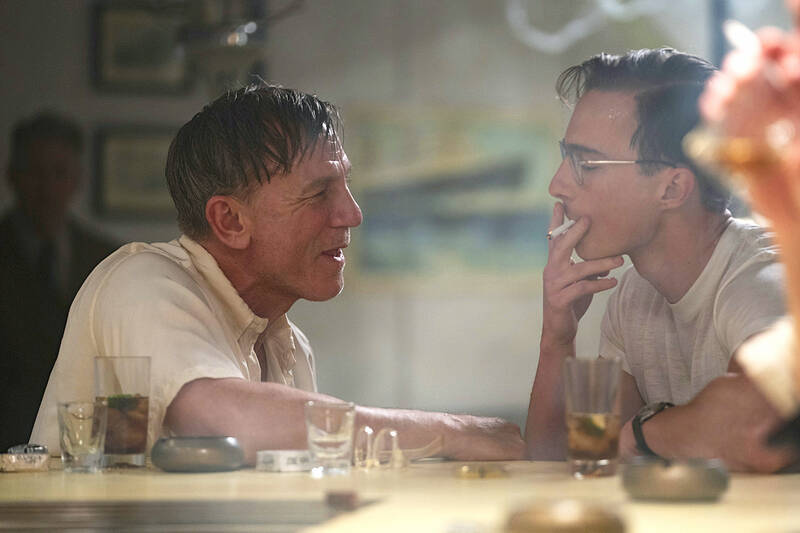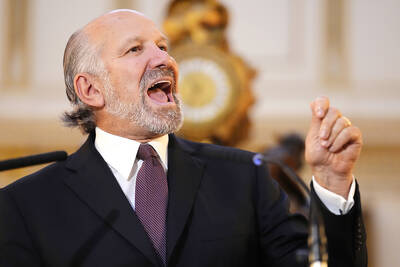One of the first real signs that Queer is going to be an unconventional movie is when Daniel Craig in a linen suit saunters through Mexico City during the early ‘50s and the soundtrack blasts a song by Nirvana.
It’s a pretty nifty way to explain this story of a man unmoored by time, geography and himself. Craig plays William Lee, an American hiding out in Mexico who spends his time going from bar to bar, knocking back tequila or mescal.
Why is he hiding out? For one thing, he’s a junkie and Mexico is more permissive about heroin use than the States at this time. He’s also gay when being gay was abhorrent and Mexico was, again, more permissive. Lee is part of a wealthy expat contingent that fritters away the days stewed in liquor and gossip.

Photo: AP
He doesn’t just sound like a William S. Burroughs hero, he’s partly Burroughs himself — Queer was a confessional novella written long before his breakthrough novel Naked Lunch. So buckle up. You’re going to see some weird stuff.
Queer is best when it’s a character study of Lee, who in Craig’s hands is charming, selfish, arrogant, abrasive, foppish and sometimes unable to read a room. It’s a million miles from 007, even if Lee carries a pistol. Craig allows us to see the yearning for real love that Lee numbs with shot glasses and needles. That Nirvana song is Come as You Are.
One day that real love suddenly appears in the form of the younger Eugene Allerton (a superb, icy Drew Starkey), who unlocks something in Lee. Could Eugene be the one to make Lee whole? Could they ride off into the sunset? Don’t be silly. This is a Burroughs story.

Photo: AP
Eugene is on-again, off-again, sometimes loving Lee and sometimes preferring a woman’s company. Part of Eugene seems to dislike Lee or being seen with him. Lee’s voracious need — shown with vigorous lovemaking scenes — is overpowering.
One scene has the two men walking down a street and Eugene subtly shakes off the older man’s hand on his shoulder. “Is he a queer?” Lee asks a friend. “I can’t tell.” One drunken night he approaches his source of adoration and confesses he wants to speak without speaking. He soon will try.
Director Luca Guadagnino and screenwriter Justin Kuritzkes, who teamed up for Challengers, face enormous challenges in adapting Burroughs’s words to the screen and yet they manage it, lyrically.

Photo: AP
There is a single-take scene in which Lee assembles the equipment necessary to inject himself with heroin and the camera watches as he gets high, slowing his body down to become a sort of pathetic statue at the kitchen table.
Symbols — a wriggling bug, snakes and mirrors — combine with trippy techniques meant to show Lee’s interior life, like his arm superimposed onto a scene tenderly touching his paramour when, in reality, it is hanging still. And there is a late moment of surreal beauty as the lovers climb into each other’s bodies, hands under the skin.
Queer — broken up into three chapters and an epilogue — gets trippier in the later stages, when Lee and Eugene leave Mexico in search of a South American plant that apparently gives users telepathic powers. Lee is clearly trying to find a shortcut into the soul, bypassing the messiness of human interactions.

Photo: AP
“You think it can fix things for you,” he is told.
But this part isn’t well integrated with the first half, almost like a movie fragment, and the filmmakers fumble an attempt to deal with the death of Burroughs’ wife, Joan Vollmer. Guadagnino seems to unnecessarily channel Stanley Kubrick as the movie wobbles to its end, with scenes filled with deafening sound, then pregnant silence and an artificial momentousness.
The score by Trent Reznor and Atticus Ross is vibrant but it gets a chef’s kiss with the addition of songs by Prince, New Order and Lydia Mendoza, mixed with contemporary songs by Benny Goodman, Eddie Cantor, Frankie Lane and Cole Porter.
The weight of it all comes down to Craig, and he’s a wonder in a fedora, dirt stains on his linen pants. Queer is a reminder of how good an actor he is and how brave he can be — naked, needy and noxious. You’ll be shaken and stirred.

In recent weeks the Trump Administration has been demanding that Taiwan transfer half of its chip manufacturing to the US. In an interview with NewsNation, US Secretary of Commerce Howard Lutnick said that the US would need 50 percent of domestic chip production to protect Taiwan. He stated, discussing Taiwan’s chip production: “My argument to them was, well, if you have 95 percent, how am I gonna get it to protect you? You’re going to put it on a plane? You’re going to put it on a boat?” The stench of the Trump Administration’s mafia-style notions of “protection” was strong

Every now and then, it’s nice to just point somewhere on a map and head out with no plan. In Taiwan, where convenience reigns, food options are plentiful and people are generally friendly and helpful, this type of trip is that much easier to pull off. One day last November, a spur-of-the-moment day hike in the hills of Chiayi County turned into a surprisingly memorable experience that impressed on me once again how fortunate we all are to call this island home. The scenery I walked through that day — a mix of forest and farms reaching up into the clouds

With one week left until election day, the drama is high in the race for the Chinese Nationalist Party (KMT) chair. The race is still potentially wide open between the three frontrunners. The most accurate poll is done by Apollo Survey & Research Co (艾普羅民調公司), which was conducted a week and a half ago with two-thirds of the respondents party members, who are the only ones eligible to vote. For details on the candidates, check the Oct. 4 edition of this column, “A look at the KMT chair candidates” on page 12. The popular frontrunner was 56-year-old Cheng Li-wun (鄭麗文)

“How China Threatens to Force Taiwan Into a Total Blackout” screamed a Wall Street Journal (WSJ) headline last week, yet another of the endless clickbait examples of the energy threat via blockade that doesn’t exist. Since the headline is recycled, I will recycle the rebuttal: once industrial power demand collapses (there’s a blockade so trade is gone, remember?) “a handful of shops and factories could run for months on coal and renewables, as Ko Yun-ling (柯昀伶) and Chao Chia-wei (趙家緯) pointed out in a piece at Taiwan Insight earlier this year.” Sadly, the existence of these facts will not stop the